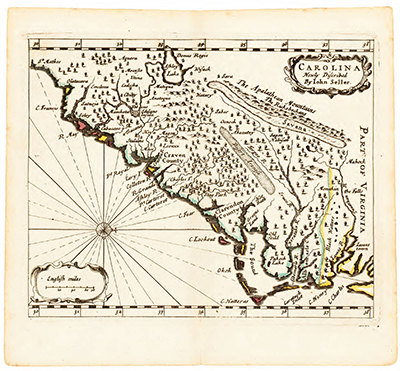See also: The Way We Lived in North Carolina: Introduction; Part I: Natives and Newcomers, North Carolina before 1770; Part II: An Independent People, North Carolina, 1770-1820; Part III: Close to the Land, North Carolina, 1820-1870; Part IV: The Quest for Progress, North Carolina 1870-1920; Part V: Express Lanes and Country Roads, North Carolina 1920-2001

Natives and Newcomers describes the people of North Carolina's various American Indian tribes and the dramatic changes that occurred when Europeans and enslaved Africans entered their land.
Even before Raleigh's "lost colony," Europeans had explored the coast and the mountains. The first permanent newcomers were English migrants from Virginia, followed after 1715 by planters and enslaved people from South Carolina.
In the next half-century, thousands of German, Scotch-Irish, and Scottish settlers came by boat from Europe and by wagon from the North. Those who established farms in the piedmont had little in common with coastal planters or the backcountry elite of lawyers, judges, and merchants. By the late 1760s, western farmers organized as Regulators to protest unjust taxes, corrupt courts, and threats to private property—issues that would soon reappear as part of the patriotic rhetoric of the American Revolution.
Chapter Contents
The First Carolinians
Lost Continent to Lost Colony
Virginians in the Albemarle
Early Coastal Towns
The Tuscarora War
The Colonial Cape Fear
Long Journey of the Highland Scots
The Great Wagon Road
The Burgeoning Backcountry
Resistance Before the Revolution